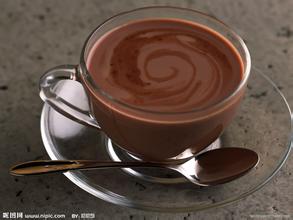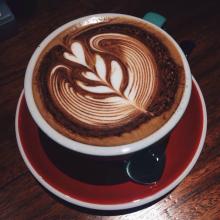Taste varieties of hard Indonesian Mantenin coffee beans treated by grinding scale
Mantenin coffee beans have large particles, hard beans, easy to appear defects in the planting process, usually through strict manual selection after harvest, if the control process is not strict enough, it is easy to cause uneven quality, plus different roasting degrees will also directly affect the taste, so it becomes a controversial single product. Mantelin has a strong taste, with rich alcohol and rich and lively movement, not astringent or sour, alcohol and bitterness can be fully revealed. Mandenin coffee beans may be the ugliest in appearance, but coffee fans say that the uglier Sumatra coffee beans are, the better they taste. During the Japanese occupation of Indonesia in World War II, a Japanese soldier drank excellent coffee in a coffee shop. He asked the owner the name of the coffee. The owner mistakenly thought he was asking where you were from, so he replied: Mandenin. After the war, Japanese soldiers recalled drinking "Mantenin" in Indonesia. So Indonesia asked the passenger to transport 15 tons of coffee to Japan, which was very popular. Thus the name of Mantenin spread, and the coffee merchant was now known as PWN. Known as mandheling, mandheling is found all over lake Toba in northern Sumatra. Sellers often label Lintong Lindong and Mandheling Mandheling coffee as dry processed. In fact, the pulp is often separated from the coffee seeds by a variety of mixing modes, more commonly a backyard wet treatment. Clever farmers put freshly picked coffee cherries into a crude peeling machine assembled from scrap metal, wood and bicycle parts. The peeled, sticky beans are then fermented overnight in plastic woven bags. The next morning, wash off the soft, fermented pulp and stickiness by hand. The silver-coated coffee is pre-dried on a sheet in the front yard and sent to a middleman's warehouse where the silver is removed and further dried. Finally, the coffee is trucked to Medan Port (capital of Sumatra) for the third and final drying. It has also been reported that in other Mandheling regions, after removal of the pericarp, the mucilage is allowed to dry and adhere to the beans, as in Brazil with semi-washing. After that, the dried slime and silver skin are removed by machine. Finally, the same two-stage drying process takes place, first at the warehouse of the middleman and then at the warehouse of the exporter in Medan Port.
Process with Sumatra characteristics. I describe these processes in such detail because it is not clear to what extent soil and atmosphere and unusual treatment techniques and three-stage drying each affect the formation of the characteristics of Linton and Mantenin coffee. Only one thing is certain. These treatments occasionally produce excellent coffee but are also extremely unstable. Only relentless picking in the export warehouse of Medan Port can guarantee the depth of texture and unique, understated richness of Lintong and Mandheling, emerging from the interference of other odors.

Important Notice :
前街咖啡 FrontStreet Coffee has moved to new addredd:
FrontStreet Coffee Address: 315,Donghua East Road,GuangZhou
Tel:020 38364473
- Prev

Introduction of Manor varieties in Panamanian Coffee Bean production area
In the land of Pokuit, there is a bean with a high performance-to-price ratio. And has a very beautiful name Flower Butterfly. She has 40% high-quality Rosa pedigree, which is composed of Rosa, Kaddura and Kaduai. It is planted in the Baru volcano region of Pokuit and grows in the volcanic area at an altitude of 1600 meters. Panama's local special
- Next

Flavor description of Jamaica Blue Mountain Coffee Bean
Blue Mountain Coffee is the most superior coffee in the world, and the weather, geological structure and topography of Jamaica provide an ideal place. The ridge that runs through Jamaica extends to the eastern part of the island, with the Blue Mountains rising to more than 2100 meters. Cool weather, foggy, frequent precipitation, use this rich soil Rain Water to reconcile. Here, the mixed planting method is used to plant coffee trees to make them mix with incense in terraces.
Related
- Detailed explanation of Jadeite planting Land in Panamanian Jadeite Manor introduction to the grading system of Jadeite competitive bidding, Red bid, Green bid and Rose Summer
- Story of Coffee planting in Brenka region of Costa Rica Stonehenge Manor anaerobic heavy honey treatment of flavor mouth
- What's on the barrel of Blue Mountain Coffee beans?
- Can American coffee also pull flowers? How to use hot American style to pull out a good-looking pattern?
- Can you make a cold extract with coffee beans? What is the right proportion for cold-extracted coffee formula?
- Indonesian PWN Gold Mandrine Coffee Origin Features Flavor How to Chong? Mandolin coffee is American.
- A brief introduction to the flavor characteristics of Brazilian yellow bourbon coffee beans
- What is the effect of different water quality on the flavor of cold-extracted coffee? What kind of water is best for brewing coffee?
- Why do you think of Rose Summer whenever you mention Panamanian coffee?
- Introduction to the characteristics of authentic blue mountain coffee bean producing areas? What is the CIB Coffee Authority in Jamaica?

